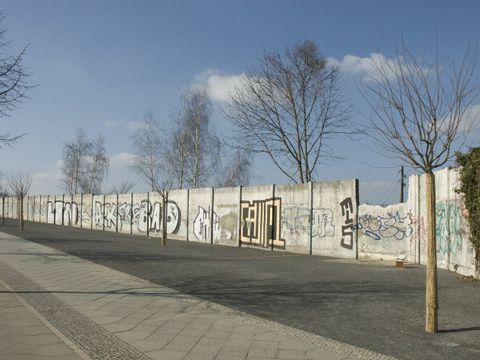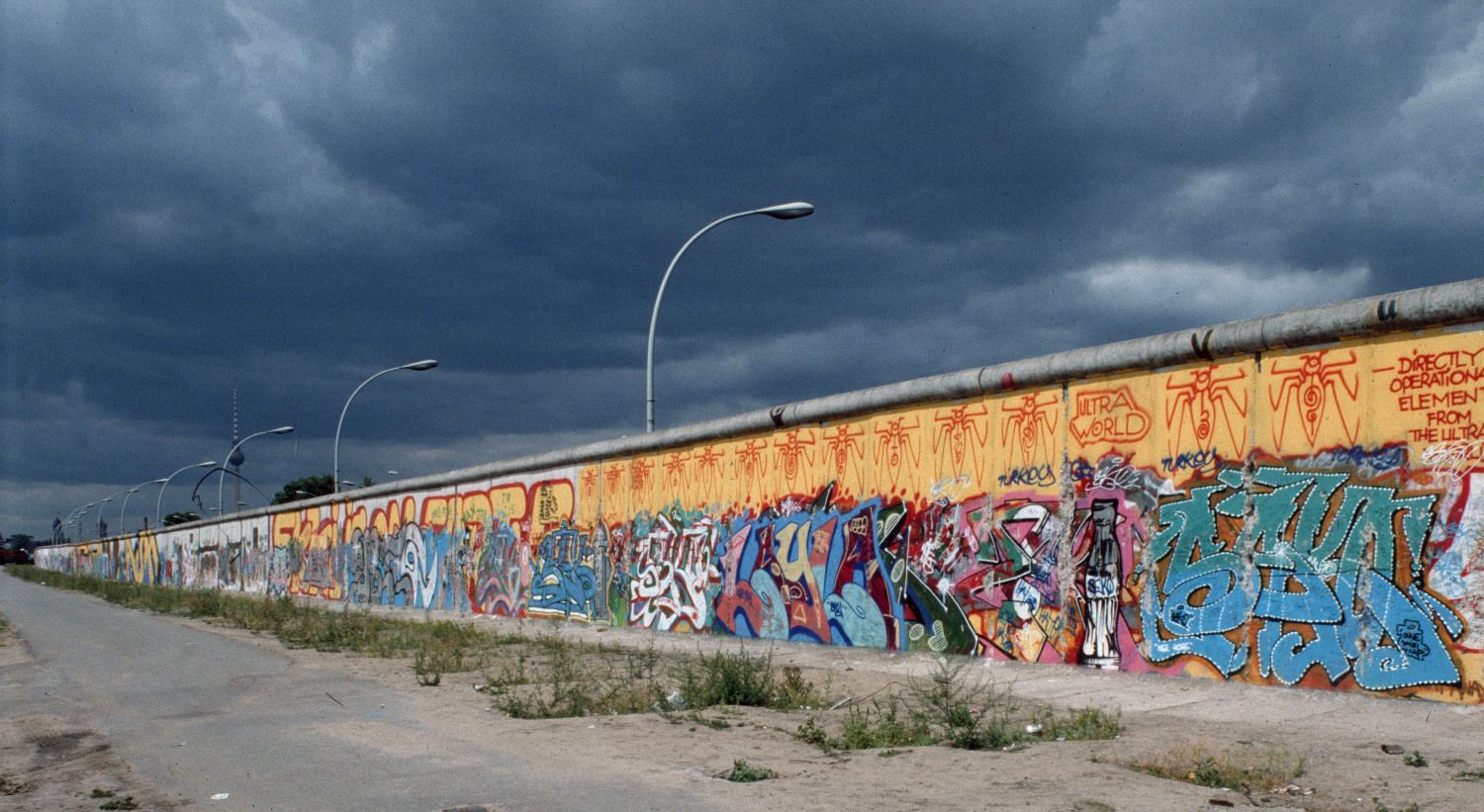
Image: Landesdenkmalamt Berlin, Wolfgang Bittner
Witness to the events of 9 November 1989
Information about Hinterland wall on Bornholmer Straße. More information

Hinterland wall along the Mühlenstraße
Image: Landesdenkmalamt, Wolfgang Bittner
This section describes the remains of the Berlin Wall now protected as historical monuments and presents them in their current topographical context. It looks at Wall segments and former watchtowers that were all part of the roughly 43-kilometer border strip running through the city.
This list does not include elements that were part of the complex system of border controls in a wider sense and are classified as monuments for their historical significance. One example would be the “Tränenpalast” (Palace of Tears), which was part of the checkpoint at the Friedrichstraße station. This transparent glass pavilion, built in 1962, was used for border clearance. The scene of countless tearful farewells between visitors from the west and their relatives in East Berlin, it brought the human suffering caused by the inner-German border into plain view.
Other examples include the many buildings near the former border that still show signs of the border fortifications of the past, such as the grain silo topped off by a watchtower at Mühlenstraße 78-80, the former home of the GDR’s Academy of Agricultural Sciences at Krausenstraße 38-39 with its barred windows, or the building now housing the “Kunstfabrik am Flutgraben,” which – because it lay on the border strip – had its windows welded and walled shut and, as the observation bridge on the roof indicates, became part of the GDR’s border security installations. As secondary structures, these buildings, too, are evidence of the Berlin Wall but are not listed separately here, nor are the protected sections of the wall between West Berlin and the rest of the GDR or the border installations along the transit routes, such as the Dreilinden checkpoint.
PDF-Document (140.3 kB)
PDF-Document (252.1 kB)
PDF-Document (270.2 kB)
PDF-Document (346.8 kB)
PDF-Document (327.2 kB)
PDF-Document (250.8 kB)
PDF-Document (254.6 kB)
PDF-Document (134.5 kB)
PDF-Document (71.5 kB)
PDF-Document (219.1 kB)
PDF-Document (117.1 kB)
PDF-Document (435.1 kB)
PDF-Document (98.3 kB)
PDF-Document (214.5 kB)
Landesdenkmalamt Berlin
Altes Stadthaus